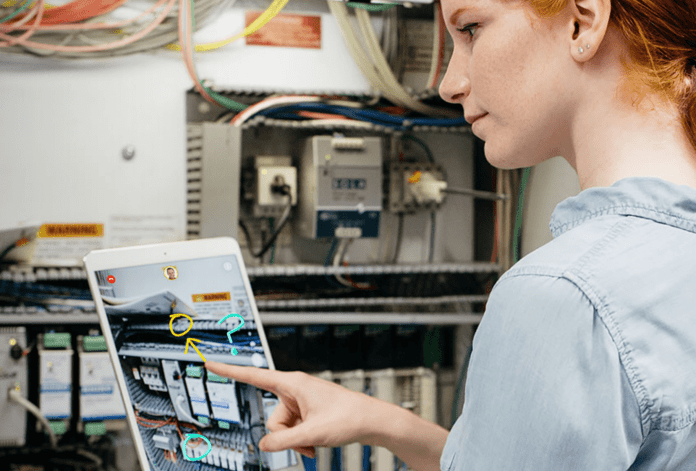What is AR remote assistance and how this technology can help manufacturers?
Augmented reality remote assistance is an emerging technology that allows experts to visually guide and collaborate with field technicians with the ultimate goal of solving technology problems.
The concept of remote assistance is based on a technician’s ability to use a remote connection to temporarily view or control a computer or a mobile device over a network or the Internet with the main goal of solving software issues. “Augmented reality remote assistance uses AR and streaming videos to link the contact center and headquarters to the field where the work is being performed. This enables agents to remotely solve hardware issues,” said Hagai Shaham of TechSee.
“Augmented reality remote assistance combines live video streaming, where images and videos are broadcast in real time, with augmented reality, an interactive technology that superimposes a computer-generated image on a user’s view of the physical environment. The combination of these two technologies creates a powerful collaborative solution for remote guidance,” Shaham said.
AR remote assistance is widely used in many industries and offers opportunities for different actors to collaborate in real-time for solving various problems.
According to VSight, a technology provider that develops and markets augmented reality remote support and remote assistance software platforms, many industries have already adopted AR remote support, which enables the reduction of technical issues at manufacturing plants.
AR tools provide guidance to employees working at the industrial facilities to solve tech issues
The company noted that AR tools can provide appropriate guidance to employees working at the industrial facilities. Experts can at the same time see and analyze the whole situation immediately, reducing the time necessary to solve the problems.
“If we imagine a real situation in the field, then it is easy to understand even the difficulties that field operators face every day. Usually in such situations, the lack of knowledge or experience of employees requires an immediate connection with the center where the specialized experts are located. The solutions enabled by AR remote support are quite effective, fast, and provide full employee engagement while increasing productivity at the same time,” VSight said.
AR remote support has a wide range of business applications, including technical support, workforce training, and safety. AR technology facilitates many of the processes that industrial firms or utility companies must accomplish. “This includes many processes that are often complicated such as maintenance, repair, and troubleshooting. Various processes also have high risks that, in addition to interrupting operating processes, can also endanger the lives of workers. Operational costs have been drastically reduced and field security has increased significantly through the adoption of AR remote support solutions, the firm added.
Experts also believe that high-bandwidth, low-latency 5G paired with advanced visualization formats will deliver a future scenario where everyone can perform their own technical support, with less need for outside help.
For more 5G manufacturing content, check out the following:
- What is 5G manufacturing and what does it mean for productivity?
- Top 5 5G manufacturing use cases
- Three 5G manufacturing case studies: Audi, Haier, Bosch
- What’s the role of a digital twin in smart manufacturing?
- 5G manufacturing use case spotlight: Automated guided vehicles
- 5G manufacturing use case spotlight: Real-time video analytic
- How to improve Overall Equipment Effectiveness with 5G
- 5G manufacturing use case spotlight: Additive manufacturing
- What is lean manufacturing and how can 5G help?
- Top 5 5G manufacturing use cases
- What’s the role of AI in 5G manufacturing?
- What is a digital thread and what does it mean for manufacturers?
- What’s the role of edge computing in 5G manufacturing?
- 5G manufacturing use case spotlight: Industrial automation
- 5G manufacturing use case spotlight: Troubleshooting using a digital twin
- How can 5G enable industrial IoT manufacturing implementations?

